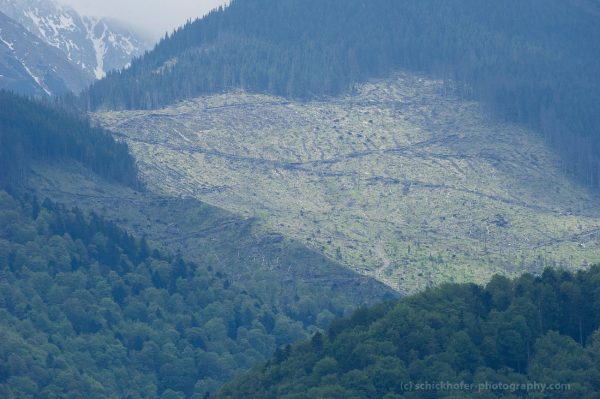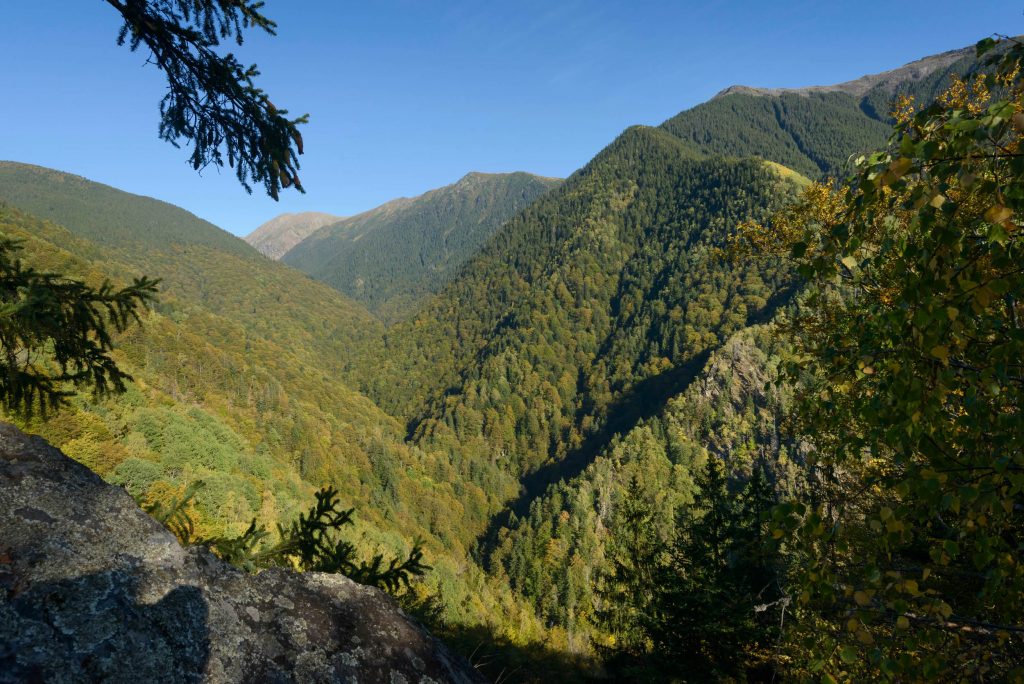Environmental organisations EuroNatur, Agent Green and ClientEarth have advanced their fight against illegal logging of old-growth and primary forests in Romania by filing a complaint against the country’s authorities to the European Commission.
Their joint goal is to stop the ongoing deliberate destruction of natural woodlands making up two-thirds of Europe’s unspoilt forests (outside Scandinavia).
The organisations claim that Romania’s state forestry, Romsilva, is conducting logging operations within protected Natura 2000 areas without proper analysis of the impact on these unique sites. In some cases the relevant environmental impact assessments, which should be performed beforehand when logging is being planned, take place years after logging gets underway.
ClientEarth wildlife lawyer Ewelina Tylec-Bakalarz said: “Systematic logging in Natura 2000 sites without effective assessment of its impact on those areas is a clear violation of EU law. This is a widespread problem across Romania, which is why we are now bringing this case to the European Commission.”
Romsilva manages 22 of 29 of the Romania’s national and natural parks. All these areas are part of the EU Natura 2000 network and fall under the provisions of both the Habitats and the Birds directives. However, legal experts say the state forestry often fails to comply with the EU legal requirements for the protection of such areas.
Gabriel Schwaderer, Executive Director of EuroNatur said: “If the breach of EU legislation in Romania is allowed to continue without any consequences, the whole Natura 2000 system is weakened. The ongoing nature conservation drama in Romania is one of the most pressing environmental crises in Europe, yet it is still largely unrecognised.”
Tylec-Bakalarz added: “The case of Poland’s Bialowieza Forest proves how effective European law can be in protection of our continent’s natural treasures. We hope that in the case of Romania’s forests the European Commission will also take action before damage of these unique ecosystems becomes irreversible.”
Notes for editors (more background info – see below):
– Around 300,000 hectares of Romanian natural forests are included in Natura 2000 sites. Many protected animals such as large carnivores, black stork, owls, woodpeckers, bats and beetles depend on them for survival.
– The campaign “SaveParadiseForests“ aims at protecting the most valuable old-growth forests of the Carpathians, particularly Romania. It is jointly coordinated and carried out by the NGOs EuroNatur (Germany) and Agent Green (Romania).


Background Briefing – Romania forests.
Complaint to the European Commission prepared by Agent Green, ClientEarth and EuroNatur, Sept. 10, 2019
Background:
Romania hosts the largest natural and primary forests in the EU outside Scandinavia which are home to numerous species protected by EU Habitats and Birds directives. A high proportion of these species (such as saproxylic beetles, bats, owls, woodpeckers or forest cocks) depend on presence of old trees and standing and lying dead wood, which can only be found in unmanaged areas or very close to them. A large proportion of these high biodiversity value forests are located within Natura 2000 sites. Logging in Romania’s Natura 2000 sites areas has had a severe and widespread impact on natural forests with a protected conservation status.
Logging permissions in Romania are based upon forest management plans (FMPs), which have to be approved by the Ministry for Water and Forests every 10 years. There is clear evidence, that in many cases these plans have not been subject to sufficient environmental assessments required by law.
There are two environmental assessments which should be conducted prior to adoption of FMPs:
Strategic Environmental Assessment (SEA)
Based on the SEA Directive this assessment is required for a wide range of public plans and programmes. It is mandatory for plans and programmes which are prepared, among others, for forestry and which set the framework for future development consent of projects listed in the EIA Directive. The aim of the SEA is to ensure that plans and programmes take into consideration the environmental effects they cause.
Assessment under the Habitats Directive
Article 6(3) of the Habitats Directive requires that any plan or project not directly connected with or necessary to the management of a Natura 2000 site but likely to have a significant effect thereon, either individually or in combination with other plans or projects, shall be subject to appropriate assessment of its implications for the site in view of the site’s conservation objectives.
The focus of the assessment under the habitats Directive is specifically on the species and/or the habitats for which the Natura 2000 site is designated. An appropriate assessment should lead competent national authorities to agree to a plan only if they can ascertain that it will not adversely affect the integrity of the site concerned.
Lack of assessment under the Habitats Directive is particularly harmful in the context of logging in Romanian forests which are home to a number of protected species, including black stork which is protected under EU law.
The NGOs who authored the complaint to the European Commission identified several forest administrations, both under management of the Romanian forest authority Romsilva and under private administration, who apply national legislation in a manner which means that environmental assessments are not carried out until some considerable time (in some cases years) after logging has taken place: OS Baia de Aramă, OS Lerești, OS Spinu Podeni, OS Scara Mâzgavu, OS Tismana, OS Poieni, OS Padeș, OS Băile Herculane, OS Avrig, OS Izvoru Florii, OS Boișoara, OS Alpina Borșa, OS Lupeni, OS Făgăraș. In these areas activities under the FMPs (logging, selling the forest etc.) started well before the environmental assessments, which is indicative of a systemic problem in Romania.
The European Commission has a power, under Article 258 of the Treaty on the Functioning of the EU, to take formal action against Member States who breach or fail to properly implement EU law. This action, known as “infringement proceedings”, allows the Commission to require the Member State to remedy the breach, and ultimately to take the Member State to court if the matter is not resolved. The present complaint has been submitted to DG Environment for them to assess whether a formal infringement procedure should be opened against Romania.
Conclusions:
Romania hosts the largest natural and virgin forest heritage within the temperate climate zone of the EU but the lack of effective strategic environmental assessment and appropriate assessment puts these forests in danger. These areas, constituting two-thirds of Europe’s last primary forests, are being systematically logged and no national remedies appear to be able to prevent this logging.
Legal action in a similar case – Bialowieza forest in Poland – has been brought before the CJEU which, in its ruling of 17 April 2018, found that the Government of Poland has failed to fulfil its obligations to protect the forest and ordered the immediate repeal of illegal logging permit. Meanwhile, Romanian law allows the systematic logging inside Natura areas without any assessment.
By continuing logging, Romania is not only violating EU and international legislation but also destroying some of Europe’s last primary forests.

